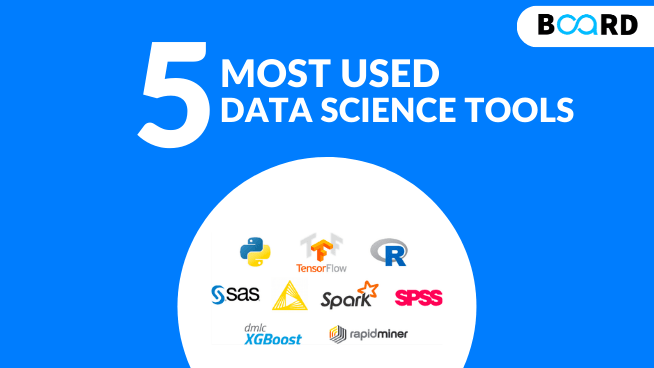Introduction to Data Science: A Starter Kit for Aspiring Data Scientists
5 Tools Every Data Scientist Should Know About

Data Science is the art of drawing useful insights from data. To be more specific, it is the process of collecting, analyzing, and modeling data to solve real-world problems.
With the availability of various Data Science tools in the market, implementing it has become easier and more scalable. In this article, we’ll discuss the 5 best tools every Data Scientist should know.
1. MS Excel
Microsoft Excel is a spreadsheet application that is bundled as part of the MS Office suite of office productivity tools. Excel has a wide range of functionalities, from sorting and manipulating data to representing that data in the form of graphs and charts.
It can be used to perform all sorts of arithmetic operations as well as those relating to statistics, engineering, and finance. It also supports programming through VBA (Visual Basic for Application).
2. Python
Python is a high-level, interpreted, general-purpose programming language, well suited for rapid application development. It has a simple and easy-to-learn syntax that allows for a steep learning curve and for reductions in the costs of program maintenance.
There are many reasons why it is the preferred language for data science. To mention a few, it has good scripting potential, great verbosity, is very portable, and gives a good performance.
3. Tableau
Tableau is another option to create interactive dashboards from a combination of multiple data sources. It also offers a desktop version, a web version, and an online service to share the dashboards you create.
It works naturally “with the way you think” (as it claims), and it is easy to use for non-technical people, which is enhanced through lots of tutorials and online videos.
4. Apache Hadoop
Apache Hadoop is a free, open-source framework that can manage and store tons and tons of data. It provides distributed computing of massive data sets over a cluster of 1000s of computers. It is used for high-level computations and data processing.
It effectively scales large data on thousands of Hadoop clusters, uses the Hadoop Distributed File System (HDFS) for data storage which distributes massive amounts of data across several nodes for distributed, parallel computing, and provides the functionality of other data processing modules, such as Hadoop MapReduce, Hadoop YARN, and so on.
5. Jupyter Notebook
Jupyter Notebook is an open-source interactive web-based computational notebook that is available for free for freelance data science professionals. It has gained popularity in recent years and has largely been adopted for the various applications it offers.
In addition to supporting multi-language programming to share codes, Jupyter enables users to create visualizations, making it a platform that merges data, code, and visualizations to create an interactive computational story. In other words, it allows users to streamline end-to-end data science workflows.
Conclusion
There is no hard and fast rule that the tools that are mentioned above are the only ones that you should be using. As you move into a career in data science, you will gain skills with a variety of tools and will choose the ones that are best for you. Until then, develop knowledge of the methods and the domains.
If you want to learn more about Data Science tools & ones that are actually being used by industry experts, then you should check out Board Infinity's Data Science Learning Path to become a certified Data Scientist! Get access to premium data science content, personalized 1:1 mentoring from top industry experts and get assured placements!
